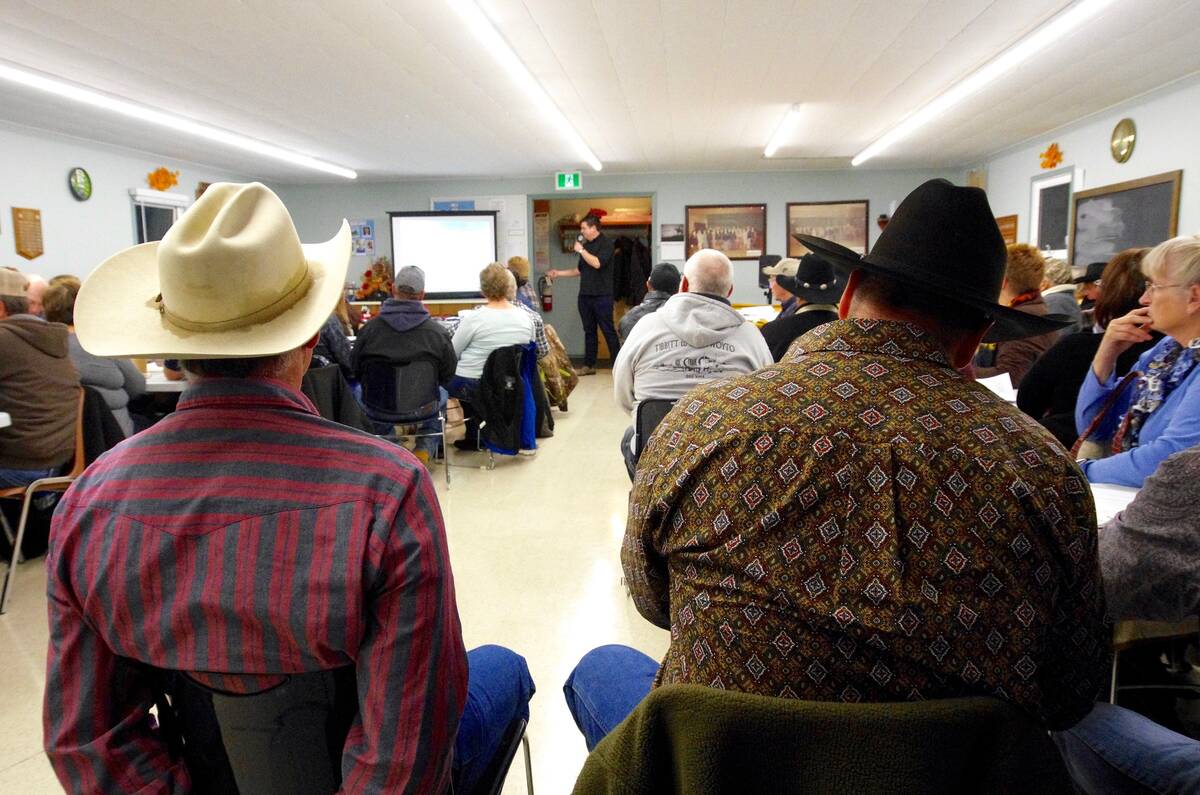Glacier FarmMedia – The fed cattle sector couldn’t catch a break in 2022 and it wasn’t any one thing that created the problem.
“This has been going on for sure since February/March,” said Jacob Bueckert, who operates Driland Feeders near Warner, Alta. and is chair of the Alberta Cattle Feeders Association. “I don’t know if we ever fully caught up from the slowdowns we had during COVID-19.
“We got close to catching up, and then we ended up getting more cattle in feed yards. There’s been problem after problem facing the feeding industry. It’s a tough go for sure.”
Read Also

Don’t blow off that beef producer meeting
Local veterinarians and livestock experts often speak at beef producer group events. They have good advice for the farmer on vaccines, calving, beef herd management and more.
Market analyst Anne Wasko of Gateway Livestock Services has the same take, saying the initial problem was packing plant shutdowns and slowdowns during the height of the pandemic.
“One thing leads to another – you can’t hang it on any one thing,” she said. “We came into 2022 not completely cleaned up from the COVID backlog. We were reasonably cleaned up, but there were record numbers on feed in Western Canada to start 2022.”
Fed cattle exports were up a bit, but it wasn’t enough.
“In the last few months, that situation has led to cattle not being moved on time, and so we’ve had heavier than normal, record carcass weights on fed cattle, “ said Wasko. “Every time you do that, you put more beef in the system. Even though kill rates might be the same as last year, you end up with more tonnage.
“Those are all the things that we’ve been really fighting this year.”
There are simply more feeder cattle ready for slaughter than packing capacity, and that’s put the squeeze on feedlots, said Bueckert.
He said he hasn’t sold any cash cattle lately, but from what he hears, prices are $300 a head lower than they should be at this time of year, based on the futures market and where U.S. cattle are trading.

The western Canadian feedlot industry has been importing more American cattle to fill its facilities but hasn’t been exporting as many as it should be, said Bueckert, adding increased exports of fat cattle to the States would reduce the supply here.
“The supply tightens and demand increases – Economics 101 supply and demand,” he said.
A shortage of workers at packing plants is another ongoing issue.
“They just can’t get enough labour to run more shifts,” he said. “If they could get a little more labour, they could run more shifts. I don’t think anyone expected the shortage of labour in North America in the last two years.”
The worker shortage is widespread, affecting his sector, construction, energy companies and many other businesses. But the lack of truckers in particular has been a major issue for feeders, Bueckert said.
“We just don’t have enough drivers,” he said. “Trucking has a huge impact on the feedlot side. It’s one of the reasons we’re bringing corn in out of the U.S. We can rail it close by into Lethbridge and trucking makes it a lot easier.
“There is still a lot of barley available … but getting it from there to here is very expensive, if not impossible. Sometimes it’s not the cost, it’s just the physical ability to get it.”
‘We really want them gone’
The longer the situation drags on, the tougher it gets because keeping cattle too long saps the bottom line, said Bueckert.
“We really want them gone,” he said. “They’re just costing us a lot of money, sitting around. They’re not gaining weight.”
It’s even more challenging for feeders still selling into the cash market, said Wasko.
“The trend over the years is for more committed cattle, more cattle going on (pricing) grids, some kind of captive supply,” she said. “It’s the spot cattle or cash cattle that tend to get bumped or pushed further down in the queue than cattle that are committed.
“It’s a trend that has happened in the U.S. as well that I don’t anticipate changing.”
Not all parts of the sector have been affected equally, she added.
“If you look at what is going on in the yearling and the calf market, there’s certainly not terribly much impact. Prices have been strong,” she said.
But there are signs of change.
“The belief right now is that the trend is certainly higher for fed cattle prices in 2023, and with that, they are still willing to procure feeder cattle and calves at higher prices,” said Wasko.
And as odd as it sounds, cold weather could be a blessing of sorts.
“Sometimes we get into these nasty cold snaps and cattle get set back in terms of their rate of gain,” she said. “Sometimes Mother Nature helps us spread things out a little bit as we go through winter. That’s not something you are wishing for, but sometimes that will help as well.”
Market seasonality should also help.
“As we go into the first quarter, typically supplies are smaller. This tends to be our smallest quarter for fed cattle supplies,” Wasko said.
As more hook space opens, more fed cattle will be cleared through the system.
“I’m leery to put a time or a date on it, but I do believe it will happen.”
– This article was originally published at the Alberta Farmer Express.
















